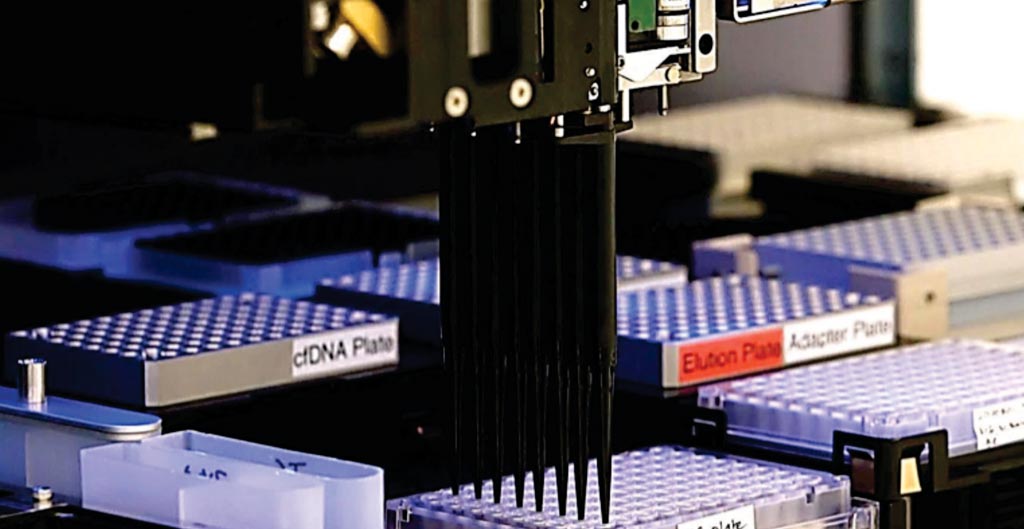Novel Blood Test Identifies Pathogens in Suspected Sepsis
By LabMedica International staff writers
Posted on 26 Oct 2017
A diagnostic test that can accurately identify the cause of sepsis is important to determine the most effective and appropriate antimicrobial therapy; however, a causative pathogen is not always identified in a large percentage of sepsis cases.Posted on 26 Oct 2017
Sepsis is a leading cause of death and can be caused by a wide range of potential pathogens. In up to 40% of cases, a causative pathogen is never identified. There is a need for improved diagnostic tests that can accurately identify the breadth of potential pathogens to inform effective antimicrobial therapy.

Image: A pipette machine allows the scientists in the Karius laboratory to process blood samples within one day (Photo courtesy of Hamilton).
Scientists at the Stanford University Medical Center (Stanford, CA, USA) enrolled a prospective cohort of patients presenting to the hospital with signs and symptoms of sepsis. Plasma samples were collected for next-generation sequencing (NGS) testing at time of initial blood culture. Extracted plasma cell-free DNA was sequenced, human sequences removed and remaining reads aligned against a pathogen database consisting of viruses, bacteria, and eukaryotic pathogens. Relative abundance was estimated and pathogens present at high statistical significance were identified. NGS results were compared to a composite reference standard of all microbiology testing performed within seven days of admission and clinical diagnosis.
The team employed the Karius Plasma Next-Generation Sequencing Test for Pathogen Detection in Sepsis on the samples from the 286 patients. The plasma NGS assay identified potential pathogens in 172/286 (60.1%) of septic subjects including DNA viruses, bacteria (including fastidious/unculturable bacteria like Mycobacterium tuberculosis), and fungi. In contrast, 15.7% (45/286) subjects had a positive initial blood culture and 38.1% (109/286) had a potential infectious etiology identified using a composite microbiology laboratory standard. The NGS plasma assay had a positive agreement of 39/45 (86.7%) and 78/98 (79.5%) compared to initial blood culture (after excluding contaminants) and the composite laboratory reference standard, respectively.
The authors concluded that with a single blood draw, the Karius plasma NGS assay identified a broad range of pathogens in septic patients three times more often than blood culture and more often than all microbiology tests combined. This plasma NGS test can identify a viruses, bacteria, and eukaryotic pathogens which can provide valuable information to help clinicians better target antimicrobial therapy for patients with sepsis. The study was presented at the annual meeting of the Infectious Diseases Society of America (IDSA) held October 4-8, 2017, in San Diego, CA, USA.
Related Links:
Stanford University Medical Center













